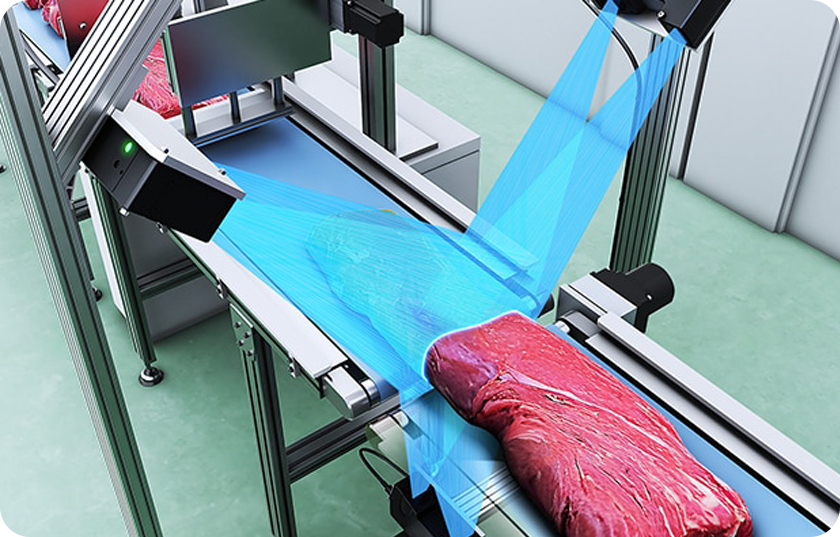
Vision Inspection System
Meat Surface Defect and Segmentation
Machine vision, AI, and deep learning detect surface defects and ensure precise segmentation of meat cuts for packaging. This automation improves accuracy, efficiency, and product quality while addressing safety, aesthetics, and challenges like meat fat rejection, reducing waste, and enhancing consistency.
Surface Texture Analysis and Defect Classification
The system doesn't just detect the presence of defects; it also categorizes them based on severity and type. Surface texture analysis helps in distinguishing between different defect categories, such as bruises, cracks, cuts, or discoloration. Using feature extraction techniques, the system measures parameters such as texture homogeneity, color variation, and surface roughness to classify defects accurately.
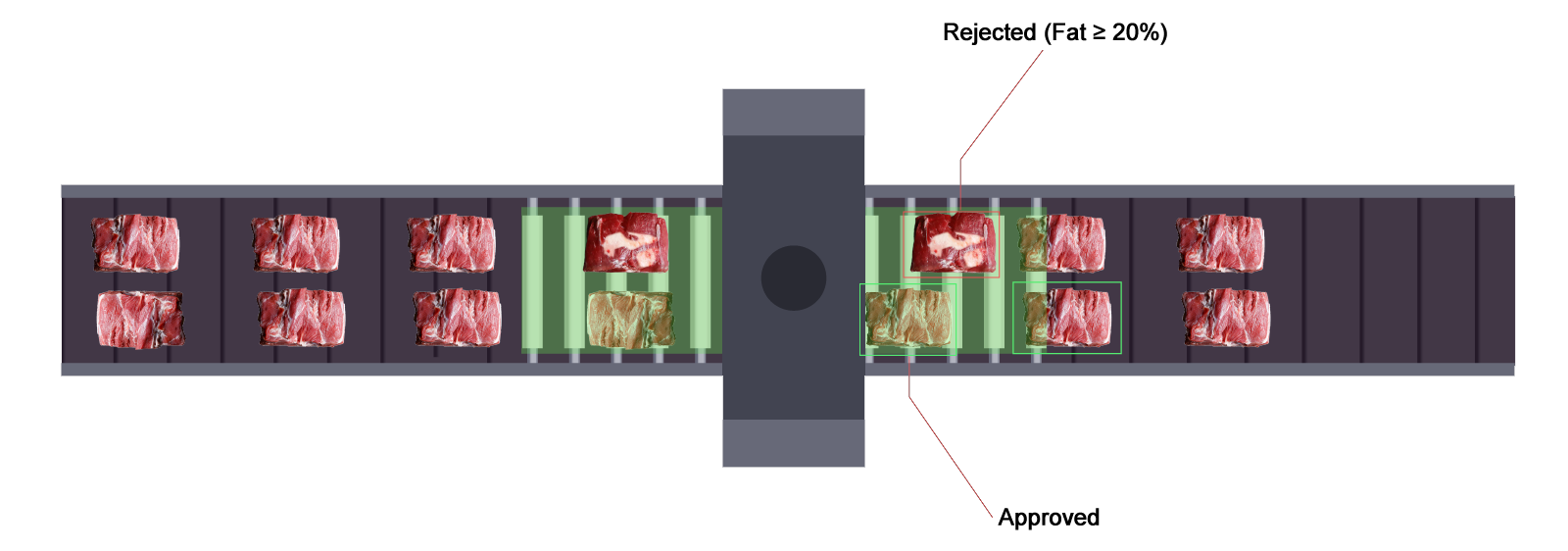
Edge Detection Algorithms
Advanced edge detection techniques are employed to locate the boundaries of defects, especially in cases of cracks or cuts.
Color and Pattern Recognition
Variations in color and surface patterns are processed to identify issues like uneven fat distribution or contamination.
Deep Learning-Based Defect Recognition
Vision system incorporates convolutional neural networks (CNNs) and other Machine visiom learning models for defect detection. The system is trained on vast datasets that include a wide variety of meat samples, enabling it to recognize different types of defects across various meat products, from beef to pork to poultry.
Model Training
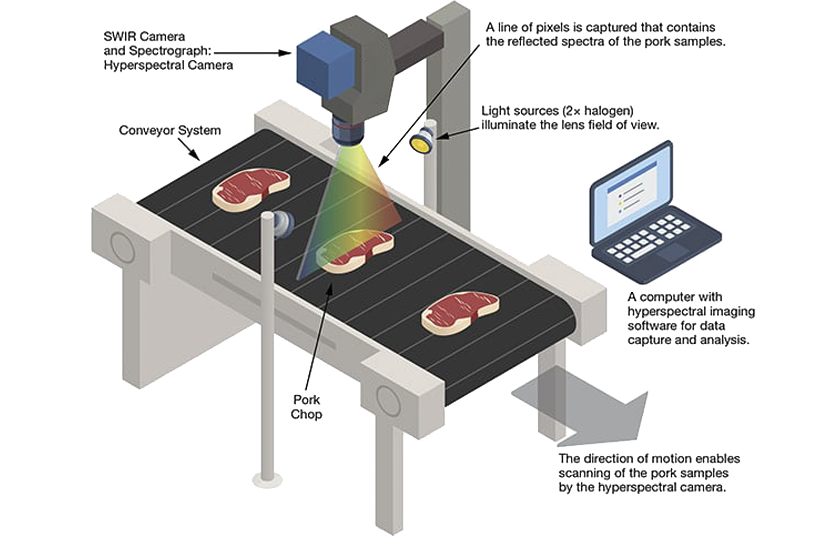
The System utilize extensive labeled datasets, incorporating images of different defect types and textures, to train the system to differentiate between normal and defective areas with high accuracy.
Real-Time Analysis
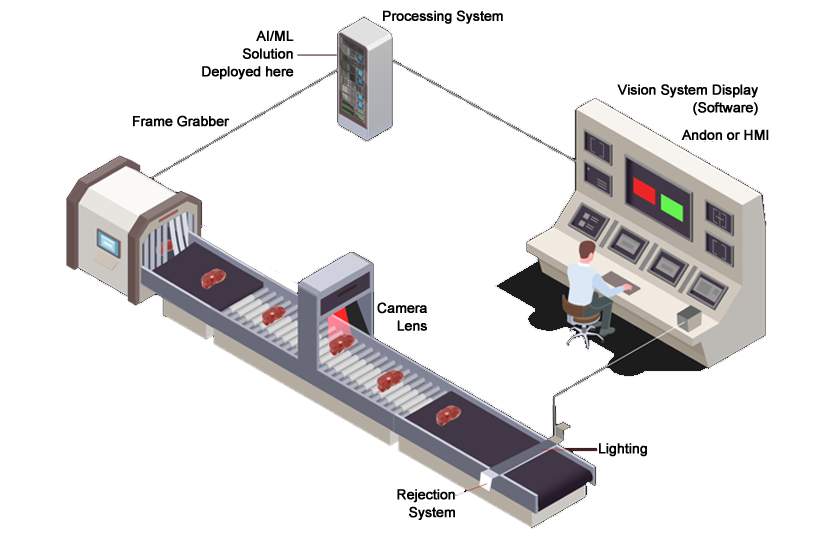
The Future of Vision Inspection
in Meat Processing
The future of meat processing will be shaped by advancements in AI and machine vision, enabling the detection of complex defects like internal tissue damage and microscopic contaminants. With IoT integration, vision systems will seamlessly communicate with other automated production systems, creating a fully interconnected smart factory.
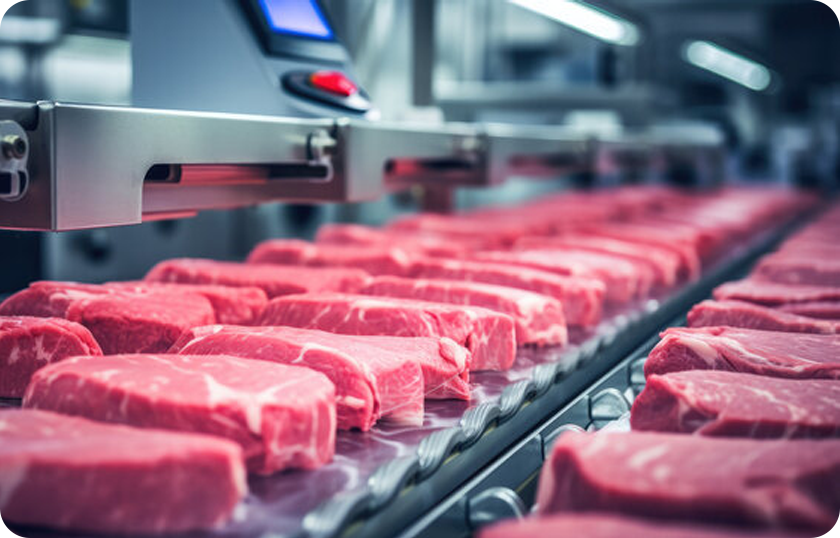
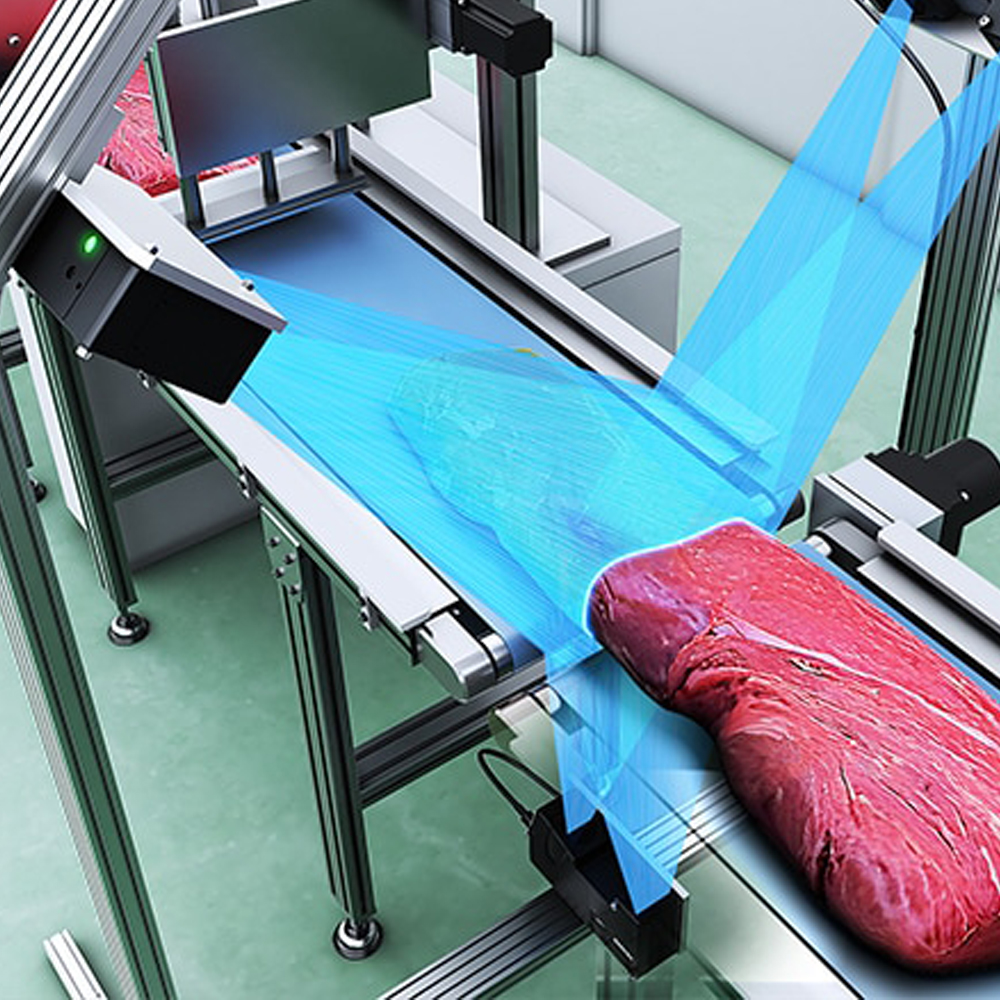 Meat Surface Defect and Segmen
Meat Surface Defect and Segmen
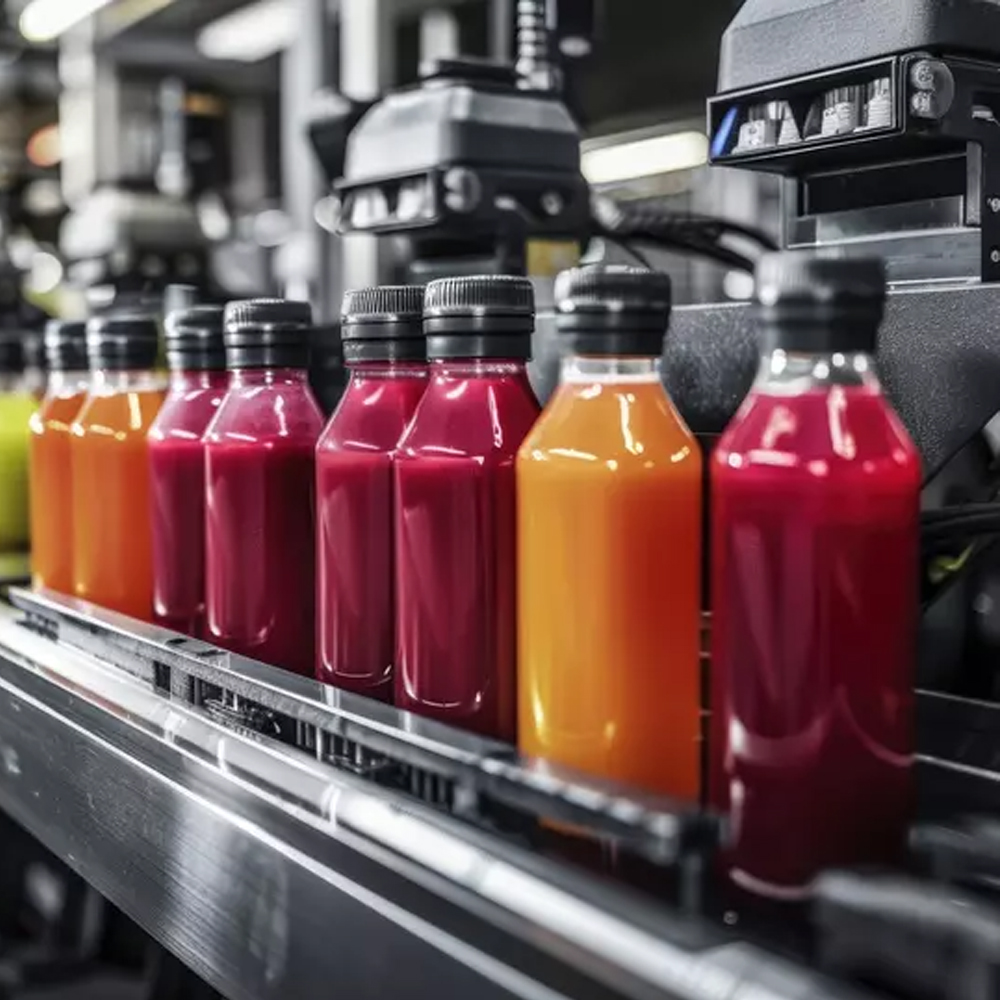 Beverage Bottles Foreign Impur
Beverage Bottles Foreign Impur
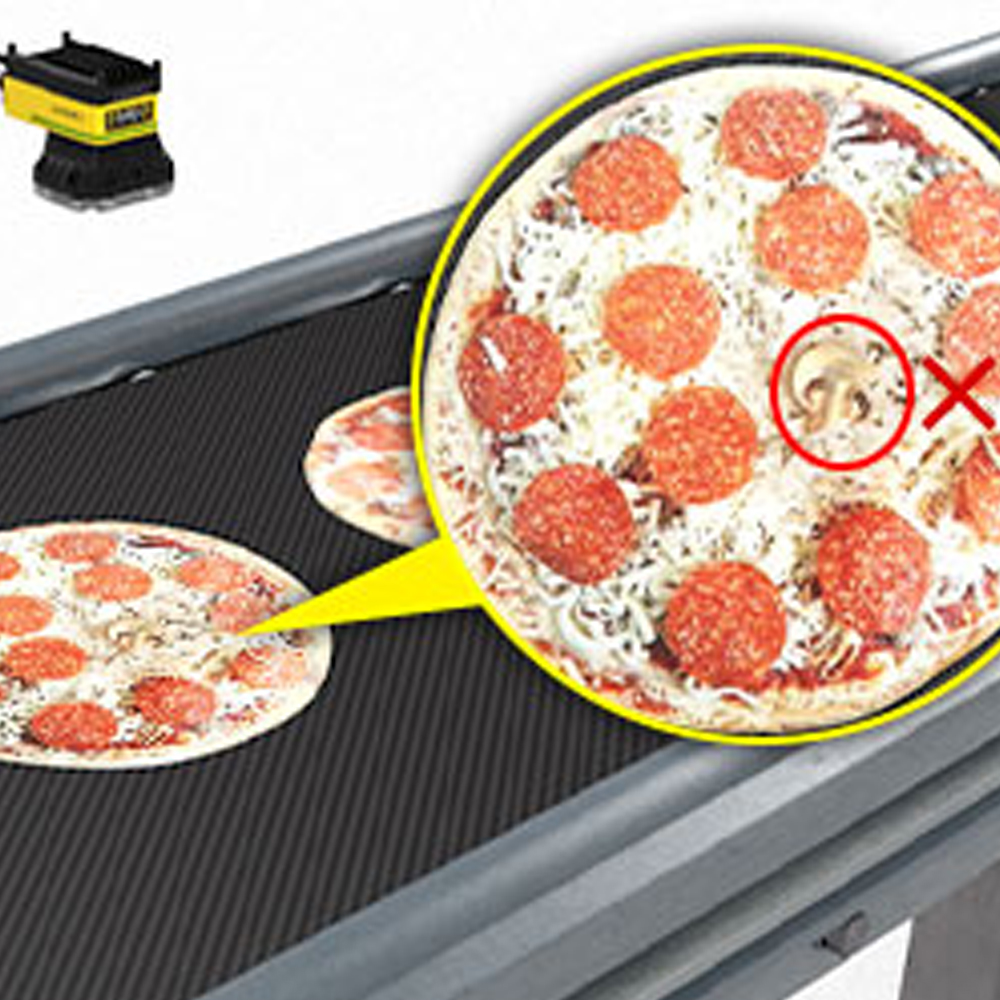 Pizza Topping Distribution and
Pizza Topping Distribution and
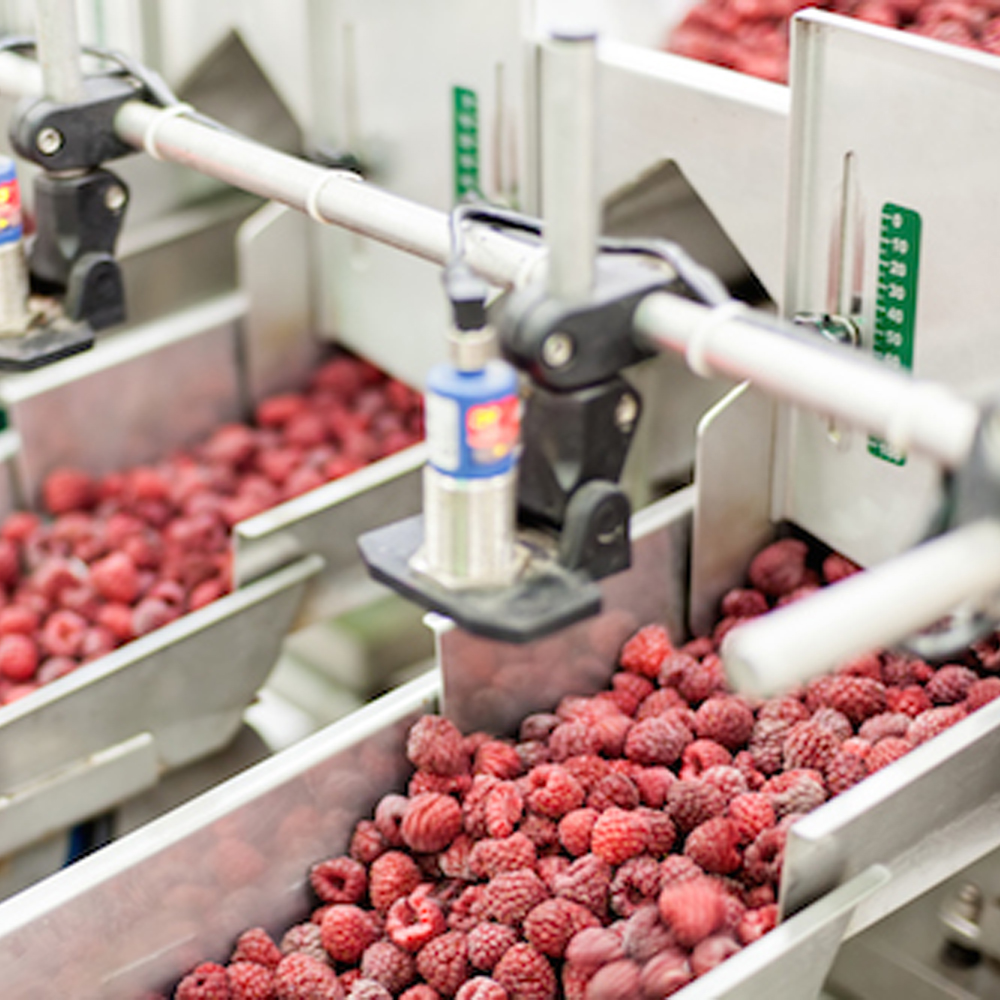 Automated Fruits & Vegetab
Automated Fruits & Vegetab